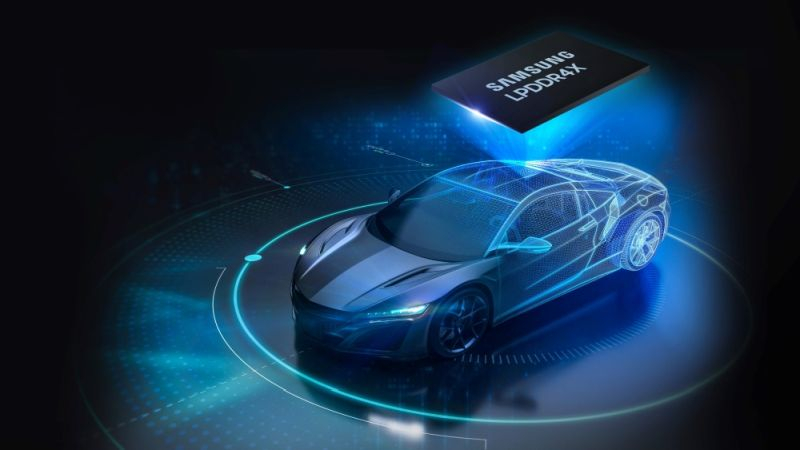Automotive electronics, which these days penetrate a wide variety of vehicle systems, have special requirements for reliability and resistance to extreme temperatures and vibration. Samsung recently announced that it was able to certify its LPDDR4X memory to meet Qualcomm’s Snapdragon Digital Chassis requirements.

Image Source: Samsung Electronics
Essentially, this means that Qualcomm trusts Samsung to use LPDDR4X chips in car multimedia systems and active driver assistance systems, which it equips with its own Snapdragon processors. As noted, Samsung is also developing LPDDR5 memory for use in the automotive segment; it will begin shipping samples of the corresponding chips to customers in the fourth quarter of this year. These chips will provide the highest information transfer rates of up to 9.6 gigabits per second, even in extreme temperatures.
Compliant with the AEC-Q100 standard, Samsung’s LPDDR4X memory is capable of operating stably at temperatures from minus 40 to plus 105 degrees Celsius. Memory chips with a capacity of up to 32 GB are designed for use in car multimedia systems. Samsung released its first memory for the automotive industry in 2017, offering eUFS chips before competitors did. Last year, the release of UFS 3.1 memory for the automotive segment was launched. According to HIS, Samsung holds 32% of the automotive memory market, second only to Micron with 44%. According to Omdia experts, the global automotive electronics market will grow by an average of 8% annually from 2023 to 2028, and the specialized DRAM segment will grow by 16% per year. By 2027, its turnover will exceed $100 billion.